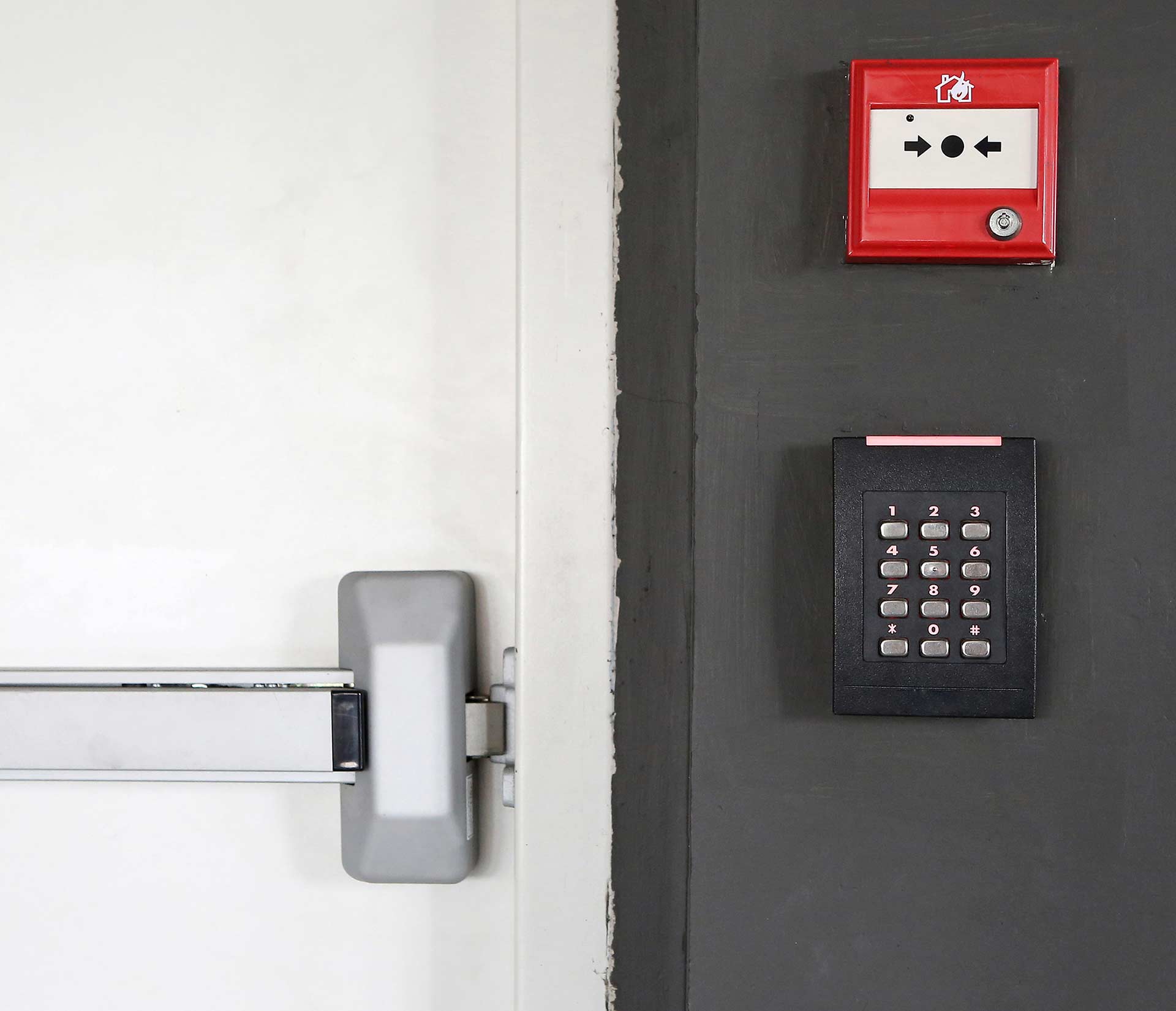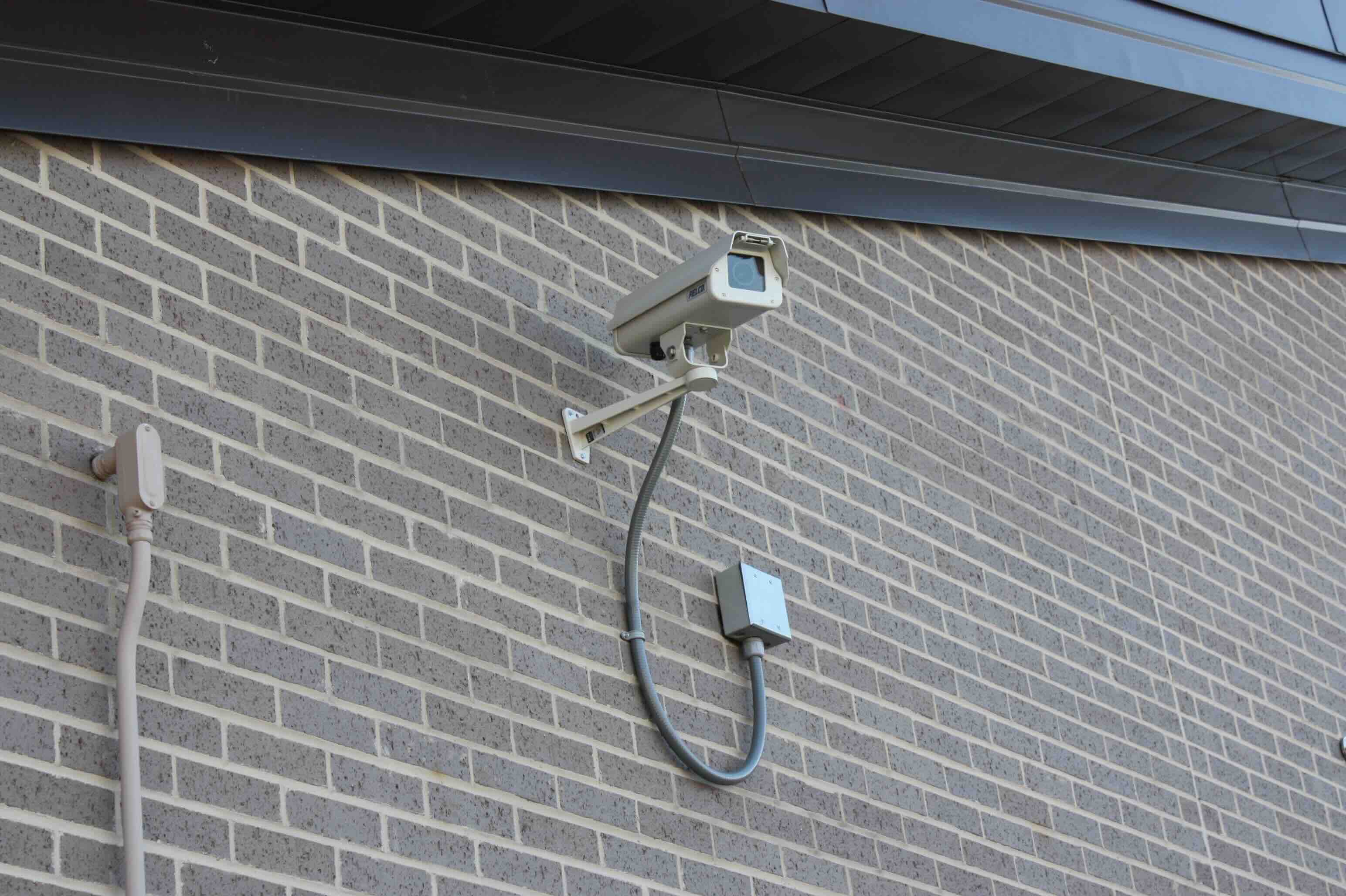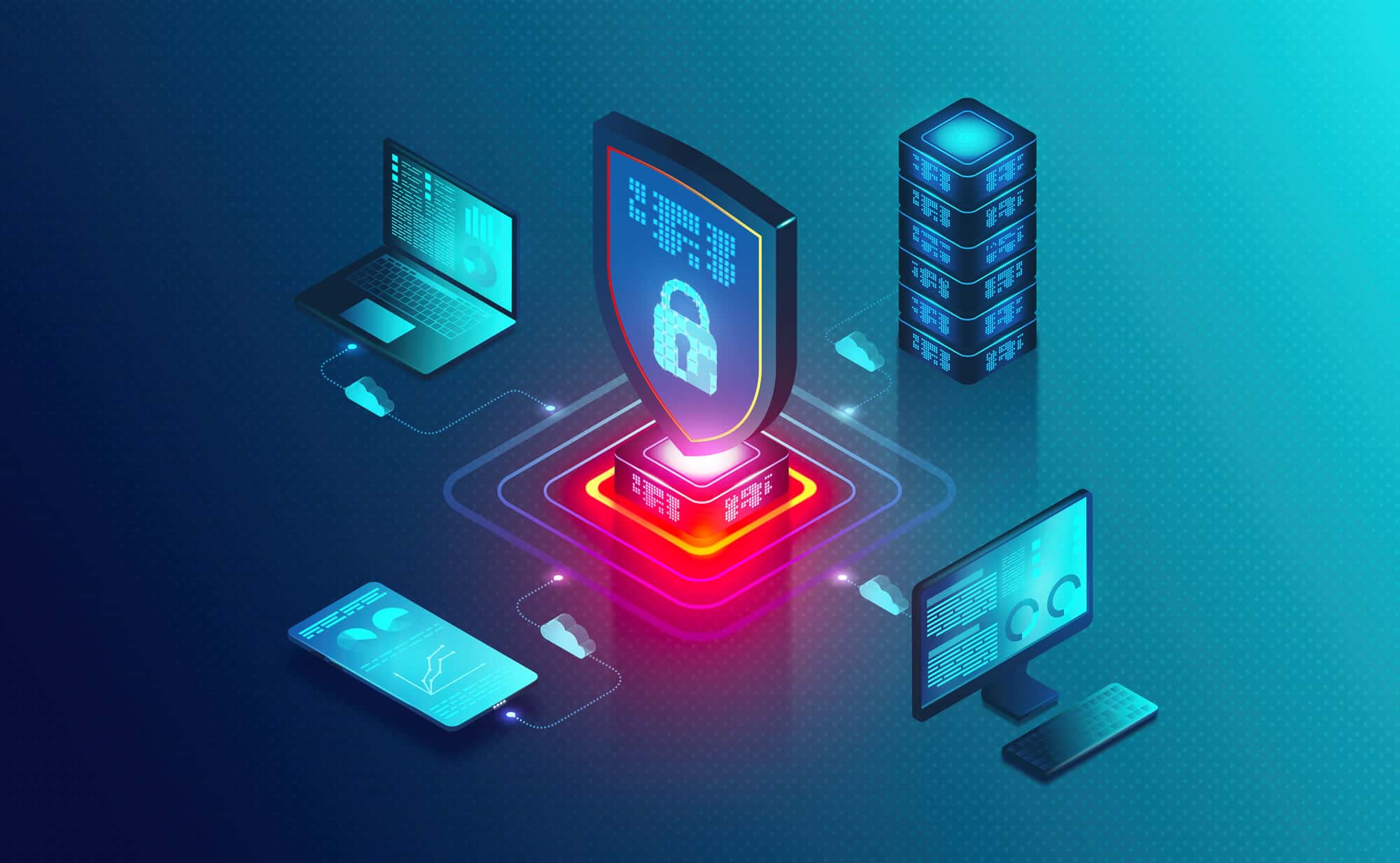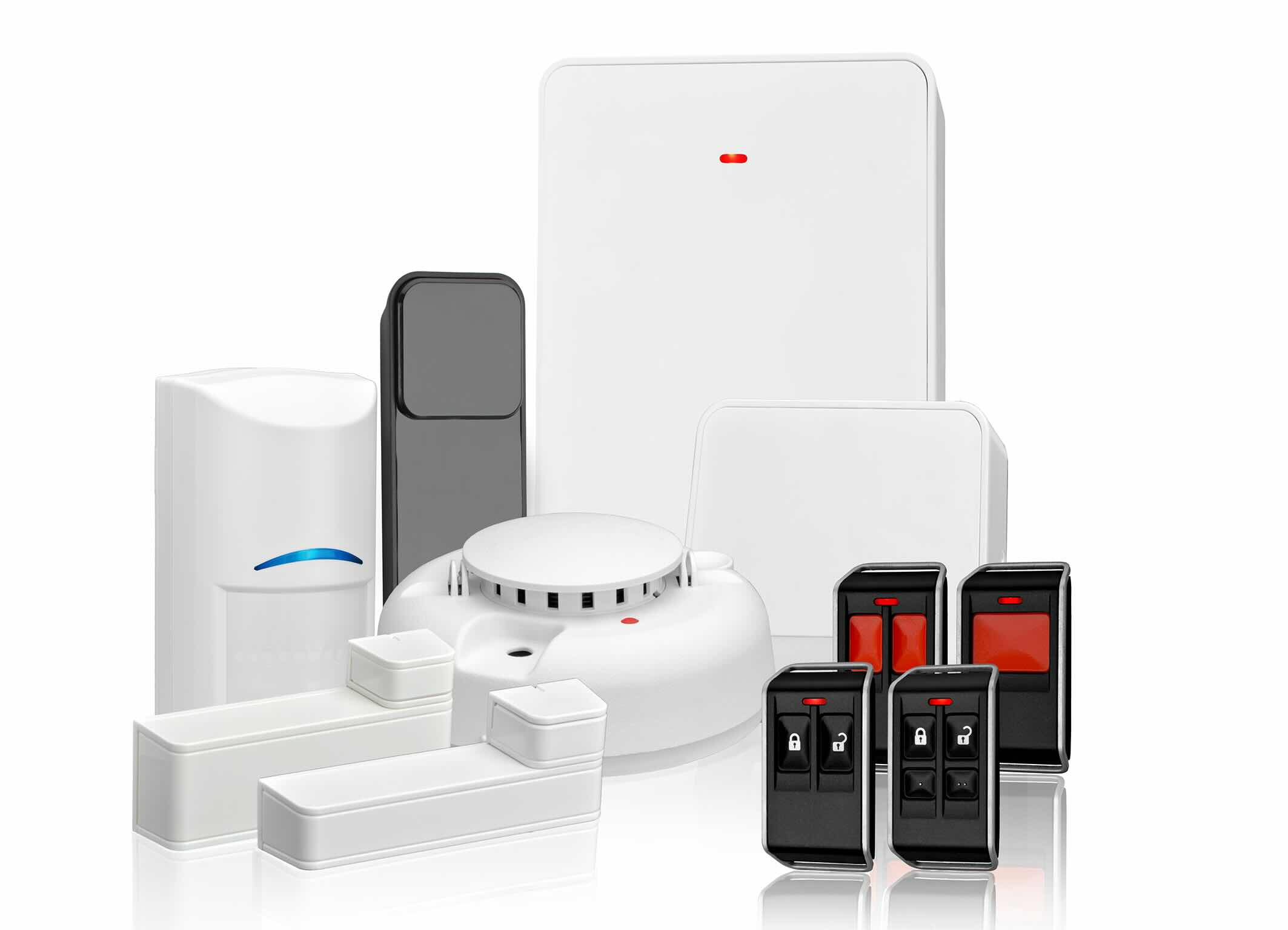Home>Home Security and Surveillance>Where To Place Intrusion Detection Systems
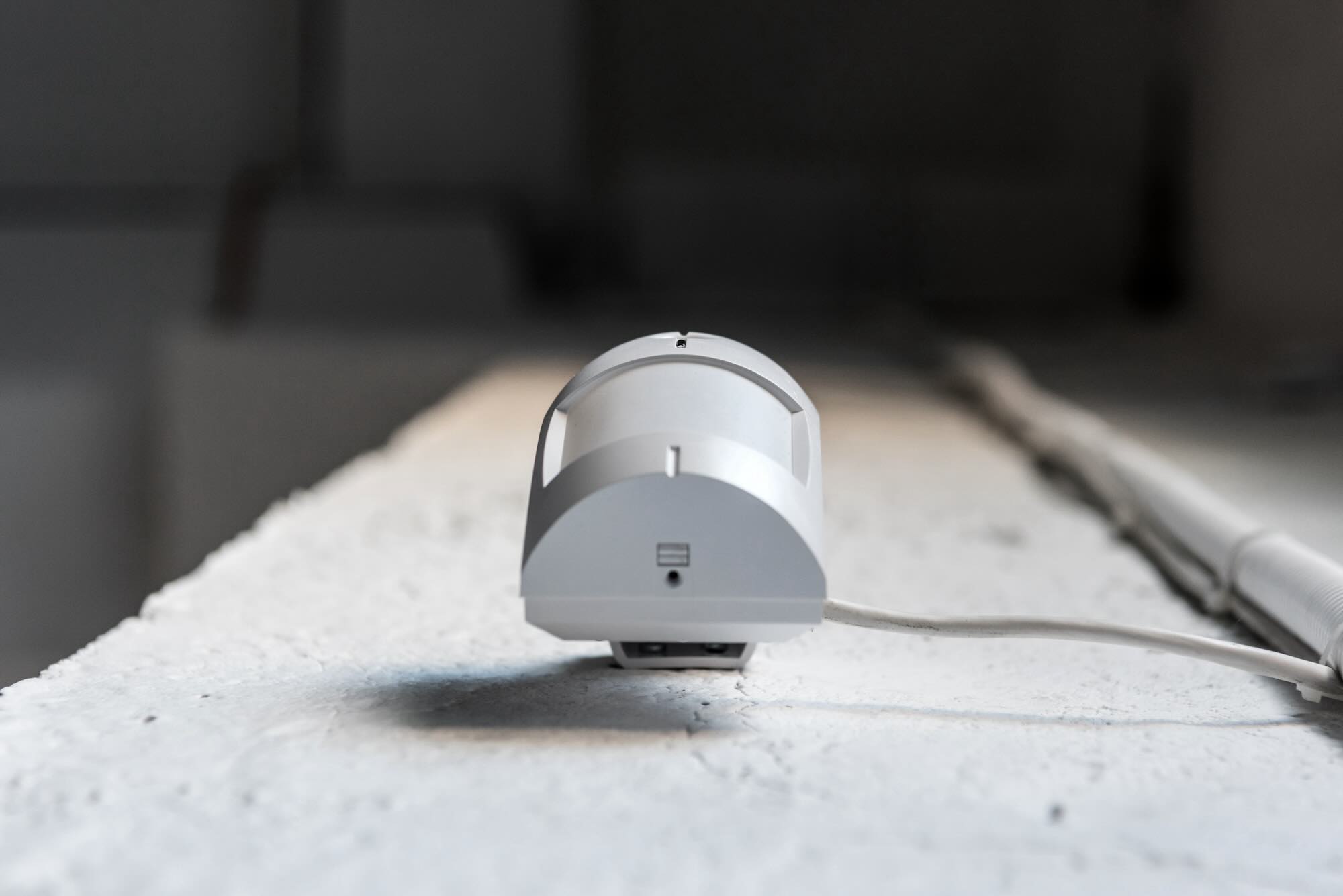

Home Security and Surveillance
Where To Place Intrusion Detection Systems
Modified: March 6, 2024
Discover the best locations to install intrusion detection systems for optimal home security and surveillance. Maximize your protection with our expert tips and recommendations.
(Many of the links in this article redirect to a specific reviewed product. Your purchase of these products through affiliate links helps to generate commission for Storables.com, at no extra cost. Learn more)
Introduction
Home security and surveillance systems play a crucial role in keeping our homes safe and providing us with peace of mind. In today’s fast-paced world, ensuring the security of our homes has become more important than ever. Fortunately, advancements in technology have made it easier to implement effective home security measures.
One essential component of a comprehensive home security system is an intrusion detection system. Intrusion detection systems are designed to detect and alert homeowners to any unauthorized entry or suspicious activity in or around their homes. These systems act as a first line of defense, providing an added layer of security.
However, to fully benefit from an intrusion detection system, it is crucial to strategically place it in key areas of the home. This article aims to guide you on the importance of intrusion detection systems and the factors to consider when placing them throughout your home.
Importance of Intrusion Detection Systems
Intrusion detection systems serve as a proactive measure to protect your home against potential threats. With the alarming increase in home burglaries and break-ins, having a reliable system in place can help deter criminals and minimize the risk of property loss or damage.
These systems provide early warning signs of any unauthorized entry, enabling homeowners to take prompt action. Whether it is a loud alarm sounding, notifications sent to your smartphone, or alerts to a centralized monitoring station, intrusion detection systems are designed to keep you informed and allow for a swift response.
In addition to their role in deterring burglaries, intrusion detection systems can also help identify other potential safety concerns. These can include fire, carbon monoxide leaks, and even medical emergencies. By integrating additional sensors and detectors into your system, you can create a comprehensive security network.
Key Takeaways:
- Strategic placement of Intrusion Detection Systems is crucial for detecting and preventing security threats in homes, networks, and mobile devices. Consider entry points, vulnerable areas, and integration with other security measures for optimal effectiveness.
- Challenges such as network complexity, false alarms, and privacy concerns must be addressed when placing Intrusion Detection Systems. Ongoing monitoring, education, and adaptability are essential for maintaining a strong security posture.
Importance of Intrusion Detection Systems
Intrusion detection systems serve as a crucial component in securing homes and protecting your loved ones. With the rising number of home burglaries and break-ins, it has become vital to have an effective system in place to ensure the safety of your property.
One of the primary benefits of intrusion detection systems is their proactive nature. Rather than simply responding to a breach after it occurs, these systems are designed to detect and alert you to any unauthorized entry or suspicious activity in and around your home. This early warning allows you to take immediate action, potentially preventing a full-scale break-in.
By implementing an intrusion detection system, you are not only deterring burglars but also creating a sense of security for you and your family. The visible presence of security cameras and sensors can act as a strong deterrent, making your home less attractive to potential criminals. Knowing that you have a robust security system in place can give you peace of mind, allowing you to feel safe and protected.
Additionally, intrusion detection systems provide you with real-time information and alerts. Depending on the system you choose, you can receive alerts via your smartphone, email, or even through a centralized monitoring station. In the event of a security breach, you can take immediate action, whether that means contacting the authorities or verifying any suspicious activity through remote access cameras.
These systems also have the potential to integrate with other aspects of your home security network. For example, by incorporating fire or smoke detectors and carbon monoxide sensors, you can create a comprehensive security system that goes beyond the standard intrusion detection measures. This way, you can be alerted to potential hazards such as fire or gas leaks, providing an additional layer of safety for you and your family.
Furthermore, intrusion detection systems can serve as valuable evidence in the unfortunate event of a break-in or other criminal activity. The recorded footage from security cameras can be used by law enforcement to identify suspects and aid in the investigation process. It can also prove useful for insurance claims, providing visual evidence of any damage or stolen items.
Ultimately, investing in an intrusion detection system demonstrates your commitment to the safety and well-being of your home and loved ones. With their proactive nature, real-time alerts, and the ability to integrate with other security measures, these systems provide a comprehensive and effective solution to protect your home from potential threats.
Factors to Consider for Placing Intrusion Detection Systems
When it comes to placing intrusion detection systems in your home, it is essential to consider various factors to ensure maximum effectiveness. These factors can help determine the strategic placement of sensors, cameras, and other components to provide optimal coverage and protection.
1. Entry Points: Identify the primary entry points of your home, such as doors, windows, and garage entrances. These are the areas where burglars are most likely to attempt unauthorized access, so it is crucial to have sensors installed at these locations.
2. Vulnerable Areas: Assess areas of your home that may be more susceptible to break-ins or unauthorized access. This could include areas with minimal natural lighting, secluded spots, or easily accessible windows. Install sensors and cameras in these vulnerable areas to ensure thorough surveillance.
3. Coverage Range: Consider the range and coverage capabilities of your intrusion detection system components, such as motion sensors or cameras. Ensure that they can effectively monitor the desired areas without any blind spots. Adjust the placement and angle of the devices as necessary to achieve comprehensive coverage.
4. Wiring and Connectivity: Take into account the wiring and connectivity requirements of your intrusion detection system. Depending on the system you choose, you may need to ensure access to power outlets or consider wireless options if hardwiring is not feasible. Also, ensure strong network connectivity for any remote monitoring features.
5. Environmental Considerations: Consider the environmental conditions in the areas where you plan to place intrusion detection system components. For outdoor devices, ensure they are weatherproof and can withstand varying climatic conditions. For indoor components, consider factors such as humidity and temperature that may affect their performance.
6. Pet-Friendly Features: If you have pets in your home, consider intrusion detection systems that have pet-friendly features. This can help prevent false alarms triggered by the movement of your pets, ensuring that the system accurately detects human activity while minimizing unnecessary alerts.
7. Integration with Other Systems: If you have other security or smart home systems in place, consider how your intrusion detection system can integrate with them. This can allow for seamless automation and central control, enhancing the overall security and convenience of your home.
8. Privacy Considerations: While intrusion detection systems provide essential security benefits, it is essential to consider privacy concerns. Ensure that the cameras and sensors are placed in a way that respects the privacy of your family and neighbors, while still effectively monitoring the intended areas.
9. Accessibility for Maintenance and Upgrades: Lastly, consider the accessibility of the area where the intrusion detection system components are installed. Ensure that they are easily accessible for maintenance and upgrades, allowing for regular maintenance checks and the installation of any necessary firmware or software updates.
By considering these factors, you can strategically place your intrusion detection system components to maximize their effectiveness and provide comprehensive coverage for your home. Remember to assess your unique home layout and security needs to determine the most suitable and efficient placement for your system.
Best Locations for Intrusion Detection Systems
Choosing the best locations for your intrusion detection systems is crucial to ensure comprehensive coverage and maximum effectiveness. By strategically placing sensors, cameras, and other components, you can create a robust security network that effectively detects and deters unauthorized access. Here are some of the best locations to consider for your intrusion detection systems:
1. Entry Points
Focus on the main entry points of your home, such as doors and windows. Install sensors and cameras near these areas to detect any suspicious activity. Ensure that the sensors are placed in a way that covers the entire entrance, including any secondary doors or windows.
2. Ground Floor Windows and Doors
Ground floor windows and doors are often the most vulnerable to break-ins. Place sensors and cameras near these entry points to capture any unauthorized access attempts. Ensure that the sensors are positioned in a way that covers the entire opening and can detect both forced entry and subtle movements.
3. Upper Floor Windows
While ground floor entry points are a priority, don’t overlook upper floor windows. Burglars may attempt to access your home through windows on higher floors, especially if they are easily accessible, such as those adjacent to balconies or close to trees or other structures. Install sensors and cameras near these windows to enhance your overall security.
4. Stairways and Hallways
Place motion sensors along stairways and hallways to detect any movement and potential intrusions. These areas act as common paths for burglars to navigate through your home, so having sensors in these locations is essential to detect their presence.
5. Outdoor Spaces
Secure your outdoor spaces by placing cameras and motion sensors in key areas such as the front yard, backyard, and driveway. Outdoor cameras and sensors can help detect any suspicious activity, trespassing, or attempted break-ins before the intruders can reach your home.
6. Common Living Spaces
Install cameras and motion sensors in common living spaces, such as living rooms, dining areas, and kitchen spaces. These areas often contain valuable assets and are commonly targeted by burglars. Placing intrusion detection systems in these spaces can provide added security and peace of mind.
7. Basement and Garage
Don’t forget to secure areas like the basement and garage, as these are often overlooked. Intrusion detection systems in these areas will help protect your home from unauthorized access and prevent burglars from gaining entry through less obvious points.
8. Perimeter
Consider installing perimeter sensors or outdoor cameras that cover the exterior boundaries of your property. By doing so, you can detect any unauthorized access attempts before intruders even reach your home. This can act as a valuable deterrent and provide an early warning system.
Remember, every home is unique, and the best locations for intrusion detection systems may vary based on your specific needs and layout. Conduct a thorough assessment of your home’s vulnerabilities and consult with security professionals to determine the optimal placement for your system.
Placing Intrusion Detection Systems in Network Infrastructure
Intrusion detection systems (IDS) play a critical role in safeguarding network infrastructure from cyber threats. These systems monitor network traffic, detecting and alerting administrators of any suspicious or malicious activity. Proper placement of intrusion detection systems within network infrastructure is essential to ensure effective coverage and protection. Here are some key considerations when placing IDS in network infrastructure:
1. Network Entry Points: Start by focusing on the entry points of your network, such as gateways or routers. These are the primary targets for cyber attacks, so placing IDS at these strategic points can help detect potential intrusion attempts and unauthorized access.
2. Demilitarized Zone (DMZ): If your network includes a DMZ, consider placing IDS within this zone. A DMZ acts as a buffer between your external network and internal network, making it a crucial area to monitor for any unauthorized communication or suspicious activities.
3. Critical Network Segments: Identify critical network segments, such as servers or databases that store sensitive data. These segments are frequently targeted by attackers, so placing IDS within these areas provides an added layer of protection and helps detect any unauthorized access attempts.
4. Internal Network: While external threats are often a primary concern, it is important not to overlook potential internal threats. Place IDS within the internal network to monitor and detect any insider attacks, unauthorized access, or unusual network behavior from within your organization.
5. Virtual Private Networks (VPNs): If your network utilizes VPNs for remote access, consider placing IDS at VPN entry points to monitor and detect any suspicious activity or potential breaches of the VPN connection. This helps ensure secure remote access to your network.
6. Intrusion Prevention System Integration: Consider integrating intrusion prevention systems (IPS) with your IDS. IDS detects and alerts you to potential threats, while IPS can take immediate action by blocking or mitigating the identified threats. Proper placement of IPS within critical network segments can enhance your network’s security posture.
7. Analytical Capabilities: Place IDS near network monitoring and analysis tools for efficient data collection and analysis. This enables security analysts to identify patterns of malicious behavior, analyze network traffic, and make informed decisions regarding incident response and network security measures.
8. Traffic Monitoring Points: Install IDS at key network traffic monitoring points, such as switches or routers, to capture and analyze network traffic. Placing IDS at these points allows for comprehensive monitoring of network activity and ensures effective detection of any suspicious behavior or possible security breaches.
9. Redundancy and Scalability: Consider the scalability and redundancy of your IDS placement. As your network grows, ensure that your IDS can scale to accommodate increased traffic and expanded network segments. Additionally, deploy redundant IDS to ensure continuous monitoring and protection, even in the event of a failure.
Proper placement of intrusion detection systems within network infrastructure is vital for proactive threat detection and prevention. By considering the entry points, critical network segments, internal network, and integrating with other security measures, you can enhance the security of your network infrastructure and mitigate potential cyber threats.
Read more: How To Test Intrusion Detection System
Placing Intrusion Detection Systems in Data Centers
Data centers are the backbone of modern businesses, housing valuable and sensitive information. Protecting these data centers from security breaches and unauthorized access is of utmost importance. Intrusion Detection Systems (IDS) play a vital role in ensuring the security of data centers. When placing IDS in data centers, careful consideration must be given to maximize their effectiveness. Here are some key factors to consider:
1. Perimeter Security: Begin by securing the perimeter of the data center. This involves placing IDS at entry points, such as doors and loading docks, to detect any unauthorized access attempts. Consider integrating IDS with access control systems to ensure only authorized personnel can enter the data center.
2. Rack-Level Protection: Install IDS at each rack within the data center. This allows for granular monitoring of server and equipment activities. By placing IDS at the rack level, you can quickly identify potential security threats or abnormalities and take immediate action to prevent any data breaches.
3. Environmental Monitoring: Data centers require strict environmental controls. Consider placing IDS that monitor environmental factors, such as temperature, humidity, and water leaks. By doing so, you can ensure any environmental anomalies that may pose a risk to the data center’s infrastructure or equipment are detected and addressed promptly.
4. Network Connectivity Points: Data centers typically have multiple network connectivity points, such as switches and routers. Install IDS at these points to monitor network traffic and detect any unauthorized or suspicious activity. This allows for early detection of potential network breaches or intrusions.
5. Intrusion Prevention Systems (IPS) Integration: Consider integrating IDS with Intrusion Prevention Systems (IPS) within the data center. IDS detects and alerts, while IPS can automatically take action to mitigate detected threats. This combination provides a more robust security posture and helps prevent potential attacks before they can cause significant damage.
6. Physical Security Monitoring: Place IDS strategically to monitor physical security aspects within the data center. This includes monitoring security cameras, access control systems, and any other physical security measures. By integrating IDS with these systems, you can ensure comprehensive monitoring of the data center’s physical environment.
7. Data Traffic Monitoring: Install IDS to monitor data traffic within the data center. This includes monitoring traffic between servers, databases, and other critical infrastructure components. By carefully analyzing data traffic patterns, you can identify any unusual or suspicious activities that may indicate a potential security breach.
8. Redundancy and Scalability: Ensure redundancy and scalability in the placement of IDS within the data center. This includes deploying redundant IDS to ensure continuous monitoring, even in the event of a failure, as well as aligning the placement with the data center’s growth and expansion plans.
9. Compliance Requirements: Consider any specific compliance requirements your data center must adhere to, such as industry standards or regulatory guidelines. Ensure that the placement of IDS aligns with these requirements to maintain compliance and meet the necessary security standards.
Placing intrusion detection systems in data centers requires careful planning and consideration. By strategically placing IDS at the perimeter, rack-level, and network connectivity points, integrating with other security measures, and addressing compliance requirements, you can enhance the overall security of the data center and protect critical business information.
Place intrusion detection systems at key entry points such as doors and windows, as well as in areas with valuable assets. Also, consider placing them near critical infrastructure such as servers and network equipment.
Placing Intrusion Detection Systems in Cloud Environments
The adoption of cloud computing has revolutionized the way businesses store and access data. However, with this shift comes the need for robust security measures to protect sensitive information in cloud environments. Intrusion Detection Systems (IDS) play a crucial role in monitoring and detecting potential threats. When placing IDS in cloud environments, several key considerations should be taken into account to ensure comprehensive security:
1. Network Entry Points: Begin by focusing on the network entry points of your cloud environment. These can include VPN gateways, load balancers, and firewalls. Place IDS at these points to monitor and detect any suspicious or unauthorized network traffic attempting to access the cloud environment.
2. Virtual Network Zones: Cloud environments typically consist of virtual networks that segregate traffic and resources based on security requirements. Place IDS within each virtual network zone to monitor traffic and detect any anomalies or potential intrusions. This ensures that each zone is effectively monitored, preventing unauthorized access between different zones.
3. API Monitoring: Application Programming Interfaces (APIs) play a crucial role in cloud environments, allowing for seamless integration and communication between different services and applications. Place IDS to monitor API calls and data exchanges, ensuring the integrity and security of these interactions, and detecting any suspicious or unauthorized API activity.
4. Data Storage and Access Points: Data storage and access points in cloud environments are critical areas that require heightened security. Place IDS to monitor data storage systems, databases, and access points, ensuring the protection of sensitive data and detecting any attempts to access or manipulate data without proper authorization.
5. Identity and Access Management (IAM): Effective IAM is crucial in cloud environments to control user access and permissions to resources. Place IDS within the IAM system to monitor user activities, including login attempts, privilege escalation, and anomalous behavior. This helps detect any unauthorized access or potential security breaches related to user identities.
6. Cloud Security Services: Many cloud service providers offer built-in security services such as cloud-based IDS. Assess the offerings of your provider and leverage these services when placing your IDS. This can provide increased visibility and monitoring capabilities specifically designed for cloud environments.
7. Scalability and Elasticity: Cloud environments offer the advantage of scalability and elasticity. Ensure that your IDS can scale alongside your cloud environment, accommodating increased traffic and resources. This ensures continuous monitoring and protection as your cloud infrastructure expands.
8. Log and Event Monitoring: Integrate your IDS with log and event monitoring systems to capture and analyze security events and alerts. This provides a holistic view of security incidents within the cloud environment and enables timely response and mitigation.
9. Compliance and Auditing: Consider any compliance requirements specific to your industry or organization. Ensure that the placement of IDS in your cloud environment adheres to these requirements and supports auditing and reporting needs.
Placing intrusion detection systems in cloud environments necessitates a comprehensive and well-thought-out strategy. By strategically placing IDS at network entry points, virtual network zones, data storage and access points, and integrating with cloud security services, you can enhance the security of your cloud environment and safeguard sensitive data.
Placing Intrusion Detection Systems in Web Applications
Web applications are highly vulnerable to various cyber threats, making the implementation of Intrusion Detection Systems (IDS) crucial for maintaining their security. IDS in web applications monitor and detect potential attacks, helping protect sensitive data and ensure the integrity of these applications. When placing IDS in web applications, consider the following key factors:
1. Web Application Firewall (WAF) Integration: Consider integrating IDS with a Web Application Firewall (WAF). The WAF acts as a first line of defense, blocking malicious traffic and protecting against common attack vectors. By combining IDS with a WAF, you can enhance security by detecting and analyzing potential threats that may bypass the initial firewall checks.
2. Placement at Network Perimeter: Place IDS at the network perimeter to monitor incoming and outgoing traffic. This allows for real-time monitoring of data exchanged between the web application and users, detecting any suspicious activity, such as attempts to exploit vulnerabilities or unauthorized access attempts.
3. Input Validation Points: Web applications are often targeted through input validation vulnerabilities. Place IDS at key points in the application’s input validation process, such as forms or user login pages. This enables the detection of attempts to inject malicious code, Cross-Site Scripting (XSS) attacks, or SQL injection attempts, helping to mitigate potential security risks.
4. Database Interaction Monitoring: Place IDS at points where the web application interacts with the database. This includes monitoring SQL queries, database transactions, and data retrieval processes. By doing so, suspicious database activities and any unauthorized attempts to access or manipulate data can be detected, helping maintain the confidentiality and integrity of the application’s data.
5. File Upload and Download Monitoring: Web applications often allow users to upload and download files. Place IDS at file upload and download points, monitoring for any malicious file uploads or downloads. This prevents the transfer of potentially dangerous files or malware-infected content that could compromise the security of the application and its users.
6. Session Monitoring: Monitor user sessions within the web application by placing IDS at session management points. This helps detect any session hijacking attempts or unauthorized access to sensitive session data. By promptly identifying and responding to such activities, the security of user sessions can be maintained.
7. In-Depth Traffic Analysis: Employ IDS to perform in-depth traffic analysis, scrutinizing HTTP/HTTPS requests and responses. This includes inspecting headers, cookies, and payloads to detect any anomalies or signs of potentially malicious activities, helping identify potential zero-day attacks or advanced persistent threats.
8. Regular Expression (Regex) Pattern Matching: Use IDS with Regex pattern matching capabilities to identify known attack signatures or indicators of compromise. By applying Regex patterns to incoming or outgoing traffic, potential threats can be detected, preventing the exploitation of vulnerabilities or unauthorized access attempts.
9. Real-Time Alerting and Response: Ensure that your IDS integrates with a real-time alerting and response mechanism. Timely alerts enable security teams to respond quickly and effectively to potential threats, mitigating the impact and minimizing any damage to the web application.
Placing intrusion detection systems in web applications contributes significantly to enhancing their security posture. By strategically placing IDS at the network perimeter, input validation points, database interaction points, and integrating with other security measures, organizations can proactively detect and prevent potential attacks, safeguarding both the application and its users’ data.
Placing Intrusion Detection Systems in Mobile Devices
With the widespread use of mobile devices and the increasing number of cyber threats targeting mobile platforms, protecting these devices from intrusion has become essential. Intrusion Detection Systems (IDS) play a crucial role in securing mobile devices by monitoring and detecting potential threats. When placing IDS in mobile devices, several key factors should be considered:
1. Device Operating System: Different mobile operating systems have varying security features and vulnerabilities. Consider placing IDS specifically designed for the respective operating system, such as iOS or Android, to maximize compatibility and effectiveness.
2. App Layer Monitoring: Place IDS at the app layer to monitor installed applications and their activities. This includes monitoring network traffic generated by apps, analyzing any suspicious behaviors, and identifying potential security risks such as data leakage, unauthorized access, or malware infections.
3. Network Connection Monitoring: Monitor network connections on mobile devices by placing IDS to analyze incoming and outgoing traffic. This helps detect any malicious network activity, such as attempted connections to suspicious IP addresses or communication with known command-and-control servers associated with malware.
4. Intrusion Prevention System (IPS) Integration: Consider integrating IDS with an Intrusion Prevention System (IPS) on mobile devices. IDS detects suspicious activities, while IPS can take immediate action, such as blocking or mitigating identified threats. This integration provides a dynamic defense mechanism and aids in preventing potential attacks.
5. User Behavior Analysis: Deploy IDS that analyze user behavior on mobile devices to detect anomalies or suspicious activities. This includes monitoring activities such as unusual app installations, unauthorized configuration changes, or atypical patterns of device usage, which can be indicative of compromise or unauthorized access attempts.
6. Secure App Stores and App Scanning: Consider utilizing IDS capabilities within secure app stores to monitor and prevent the installation of potentially malicious apps. Additionally, leverage IDS capabilities to scan installed apps for known vulnerabilities or signs of malicious behavior to ensure the overall security and integrity of the mobile device.
7. Mobile Device Management (MDM) Integration: Integrate IDS with Mobile Device Management (MDM) systems to centrally monitor and manage mobile devices within an organization. This allows for comprehensive monitoring of device security settings, app installations, and device compliance with security policies.
8. Device-to-Device Communication Monitoring: Place IDS to monitor device-to-device communication via technologies such as Bluetooth or Wi-Fi Direct. This helps identify potentially malicious or unauthorized connections between mobile devices, preventing data leakage or unauthorized access to sensitive information.
9. Real-Time Alerts and Response: Ensure that IDS on mobile devices provide real-time alerts and notifications to both users and administrators. Immediate alerts enable prompt actions, such as quarantining a potentially compromised device or blocking a suspicious network connection, reducing the impact of security incidents.
By strategically placing intrusion detection systems in mobile devices, organizations can enhance the overall security of their mobile ecosystem. This includes monitoring app activities, network connections, and user behavior to detect and respond to potential threats, ultimately protecting sensitive data and maintaining user trust in mobile devices.
Read more: How To Create Intrusion Detection System
Challenges and Considerations for Placing Intrusion Detection Systems
Placing Intrusion Detection Systems (IDS) strategically is essential for effective threat detection and prevention. However, several challenges and considerations should be taken into account to ensure the optimal placement and functionality of IDS. Here are some key challenges and considerations:
1. Network Complexity: Modern networks are complex and dynamic, making it challenging to identify the ideal placement of IDS. Consider the network architecture, including segmentation, virtualization, and cloud infrastructures, to ensure comprehensive coverage while avoiding blind spots or overlap.
2. False Positives and False Negatives: IDS can generate false positives, alerting administrators to potential threats that turn out to be harmless. Conversely, false negatives can occur when IDS fail to detect actual security threats. Striking the right balance is crucial to avoid alarm fatigue and ensure accurate and timely threat detection.
3. Scalability and Performance: IDS should be scalable to accommodate growing network traffic and expanding infrastructure. Consider the impact on IDS performance as network load and traffic increase. Deploying IDS with sufficient processing power and capacity ensures continuous monitoring without compromising performance.
4. Privacy and Compliance: Compliance with privacy regulations and industry standards is of utmost importance when placing IDS. Consider privacy implications and ensure that IDS placement respects legal and ethical considerations, particularly in sensitive areas such as residential spaces or employee workstations.
5. Cost and Resource Allocation: Implementing and maintaining IDS involves costs, including hardware, software, licensing, and operational resources. Plan and allocate the necessary budget and resources to ensure the proper functioning and effectiveness of IDS, understanding that comprehensive coverage may require investments in multiple IDS solutions.
6. Integration with Security Ecosystem: Consider how IDS will integrate and collaborate with other security solutions within the overall security ecosystem. This includes Security Information and Event Management (SIEM) systems, firewalls, anti-malware solutions, and incident response mechanisms. Seamless integration allows for centralized monitoring, correlation, and incident management.
7. Ongoing Monitoring and Maintenance: IDS should be continuously monitored and updated to stay vigilant against emerging threats. Regular maintenance, software updates, and tuning are necessary to ensure optimal performance and adaptability to evolving threats. Allocate resources for ongoing monitoring and management of IDS to maintain their effectiveness.
8. Education and Training: IDS placement should be supported by comprehensive education and training for security personnel. IDS alerts need to be properly assessed, and proper action needs to be taken promptly. Ensure that security teams are trained effectively to interpret and respond to IDS alerts accurately, minimizing false negatives and increasing incident response efficiency.
9. Adaptability to Changing Threat Landscape: The threat landscape constantly evolves, with new attack techniques emerging regularly. IDS should be capable of adapting and evolving to counter new and sophisticated threats. Regular vulnerability assessments, threat intelligence integration, and periodic evaluation of IDS effectiveness are critical to maintaining resilience against emerging threats.
Placing Intrusion Detection Systems involves addressing the unique challenges and considerations of the environment in which they are deployed. By carefully addressing these challenges and considerations, organizations can fortify their security posture and effectively detect and mitigate potential threats.
Conclusion
Intrusion Detection Systems (IDS) are paramount in ensuring the security and protection of various environments, including homes, network infrastructure, data centers, cloud environments, web applications, and mobile devices. By strategically placing IDS and considering the specific factors for each environment, organizations can enhance their security posture and mitigate potential threats.
The importance of IDS cannot be overstated. They act as a proactive defense mechanism, detecting and alerting against unauthorized access, suspicious activities, and potential security breaches. IDS provide real-time monitoring, enabling prompt response and mitigation measures to be taken to minimize the impact of security incidents.
When placing IDS, several factors should be considered. Identifying entry points, vulnerable areas, and critical network segments allows for targeted placement. Integration with other security measures, such as firewalls, intrusion prevention systems, or security event management systems, strengthens the overall security ecosystem.
Challenges associated with IDS placement, such as network complexity, false positives/negatives, scalability, privacy, and resource allocation, need to be addressed to ensure their effectiveness. Ongoing monitoring, maintenance, education, and adaptability to the changing threat landscape are essential to maintaining the optimal performance and resilience of IDS.
In conclusion, the strategic placement of Intrusion Detection Systems is vital in maintaining a secure and protected environment. By carefully considering the specific needs, challenges, and threats of each environment, organizations can leverage IDS to detect potential intrusions, mitigate vulnerabilities, and safeguard critical assets and information. IDS serve as an integral component of a comprehensive security ecosystem, contributing to a proactive and robust defense against ever-evolving cybersecurity threats.
Frequently Asked Questions about Where To Place Intrusion Detection Systems
Was this page helpful?
At Storables.com, we guarantee accurate and reliable information. Our content, validated by Expert Board Contributors, is crafted following stringent Editorial Policies. We're committed to providing you with well-researched, expert-backed insights for all your informational needs.





